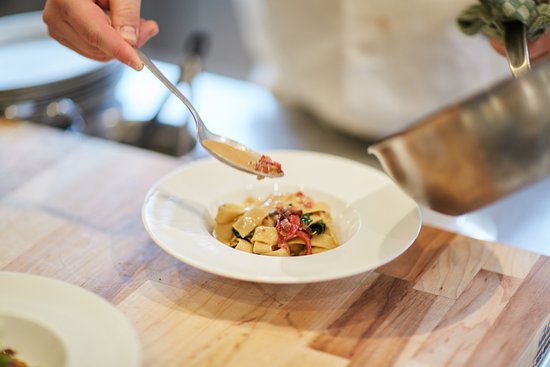A food service style is the way in which food is presented, delivered, and packaged for the consumer. Each food service style has its own meaning and approach. What are the benefits and drawbacks to each style of service?
Touchless To-Go Service: All meals are prepared on site by private chefs and packaged in to-go containers for members to eat at their leisure, encouraging maximum physical distancing. Set the bar high. Promote the safest service style first. Then ease back to full service as restrictions relax.
- Benefits: Promotes physical distancing, limits interaction and cross contamination, encourages portion control (cost effective).
- Drawbacks: Additional cost of takeout containers, not environmentally friendly, students likely will need to adhere to a pickup timing window.
Cafeteria Service: All meals are prepared on site and plated individually for members by their private chefs during meal periods. Physical distancing is required by the chef and chapter members.
- Benefits: Encourages portion control, students get more face time with their chef, minimal surface touch points because chef is serving every meal.
- Drawbacks: Labor intensive on chef, students will likely need to adhere to a pickup timing window.
Full-Service/Buffet: Meals are prepared on site by private chefs and served on a hot/cold buffet line, family style, or plated as per the chapter’s preference.
- Benefits: Relaxed physical distancing, students serve themselves, reusable dishes reduce waste, less labor intensive for the chef.
- Drawbacks: Potential spike in cases if not cautious, minimal physical distancing, multiple surface touch points (plates, serving utensils, cutlery etc.).
Hungry for more? Check out our Prevention and Preparedness Guidebook for more reference materials for Fall Opening.



0 Comments